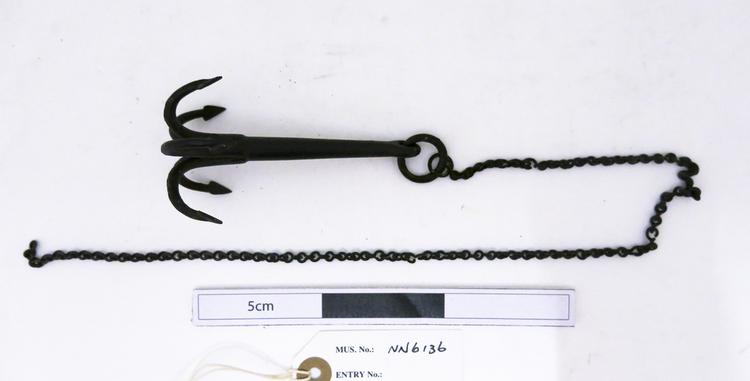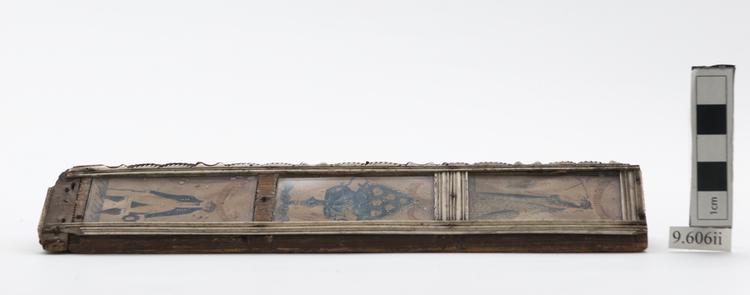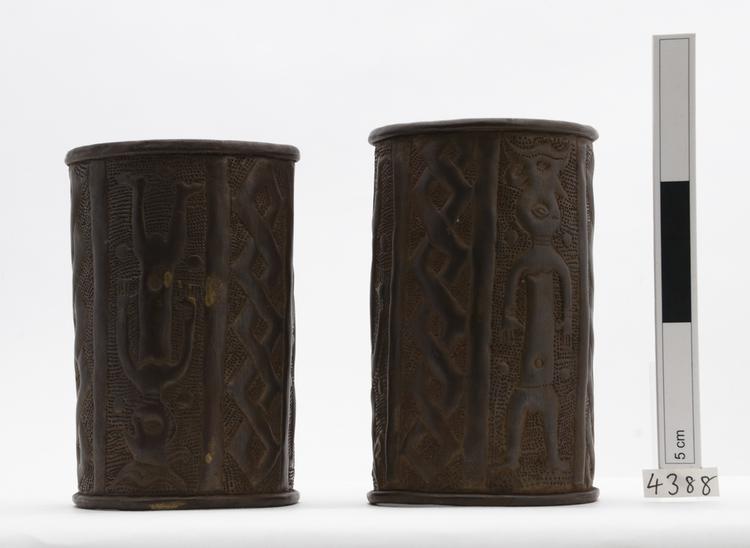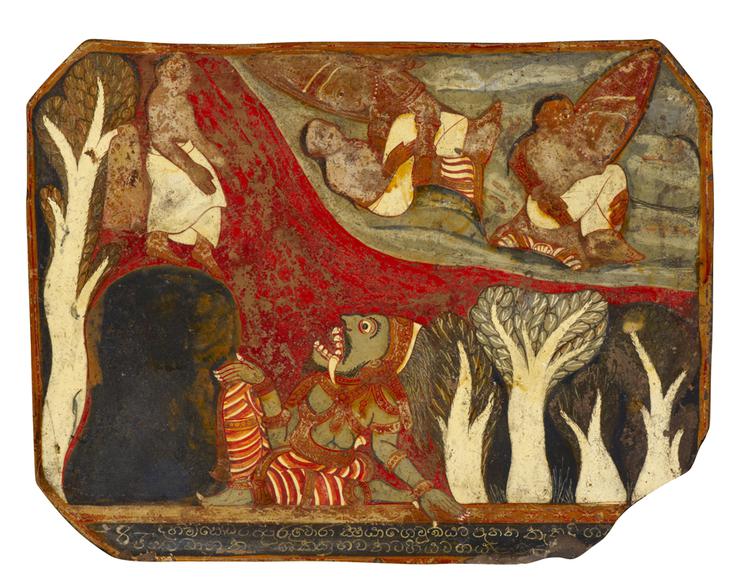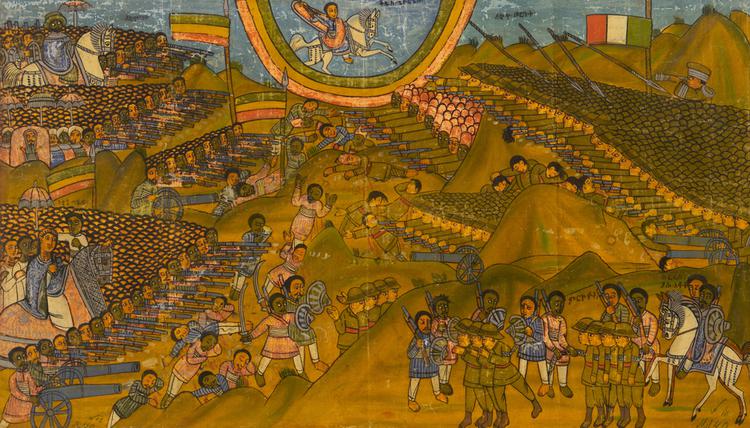
Painting on cotton depicting the Battle of Adwa fought between the Ethiopian forces (left) and the invading Italian forces (right). The Battle of Adwa was fought during the Abyssinian War, in the Second World War.
Top left: Emperor Menelik is shown wearing a blue cloak and a European-style hat, riding on a white horse, surrounded by his army. Below is a priest carrying on his head a tabot, covered in an ornate cloth. He is accompanied by four turbaned priests who carry three silk umbrellas.
Bottom left: Empress Taytu is shown in a blue cloak, riding a richly caparisoned horse, surrounded by her army. Behind her are two female attendants with neck tattoos.
Top centre: Saint George is depicted riding a white horse and carrying a long Ethiopian spear. He is surrounded by a rainbow of green, yellow and red; the national colours of Ethiopia.
Centre: graphic descriptions of the battle with Ethiopian warriors in white trousers and tunics, with ornate shields and long curved swords ('shotel'), and Italian soldiers in green uniforms with red belts and pith helmets.
Top right: the Italian army and colonial forces are shown as a mass of helmets and guns. Four long spears have fallen into their midst, thrown by Saint George.
Bottom right: Ethiopian warriors are shown with a group of captured Italian soldiers.



